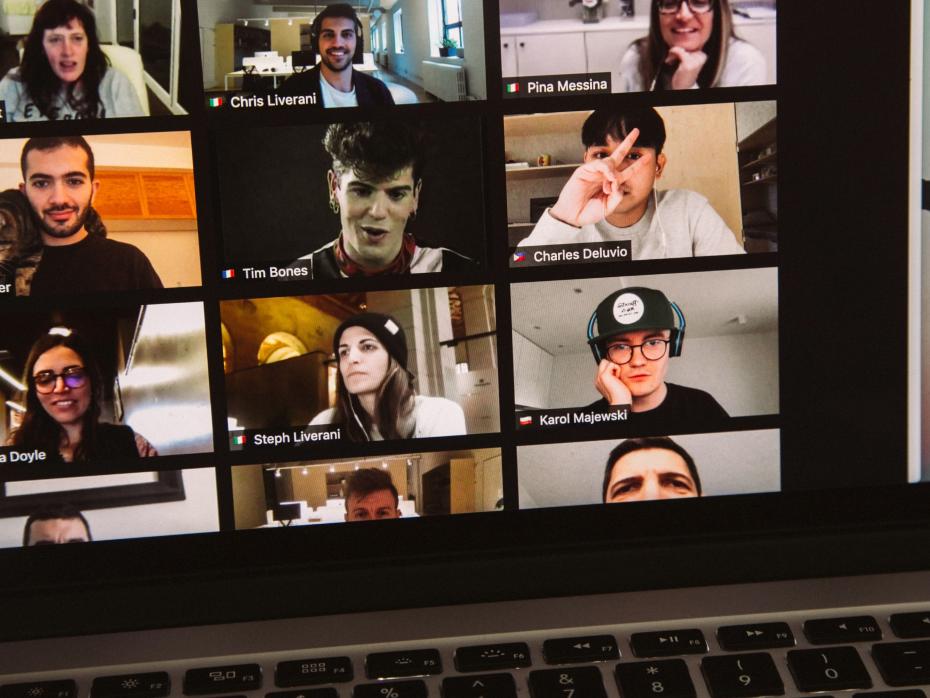Although the pandemic forced universities to embrace technology-enhanced teaching like never before, institutions should carefully consider how to encourage faculty to continue to innovate their teaching using digital technologies.
There should be clear support services in place from information technology departments, a willingness to scrap systems that aren’t working and acknowledgement that the capacity to innovate isn’t inclusive to all faculty.
These are the recommendations from a task force discussing how technology can support teaching innovation ahead of Digital Universities Week US in May. Task force members considered a series of questions on the topic of teaching innovation and reflected on their individual experiences at both research-focused institutions and a completely online university.
How can universities support already busy faculty to be innovative teachers?
Learning outcomes should be the motivation for any use of technology in the classroom, the group agreed. “Be strategic” about what will work best for your students and “don’t be distracted by the shiny objects,” said Sheryl Barnes, director of digital learning in residential education at the Massachusetts Institute of Technology’s (MIT) Office of Open Learning.
Vijay Kumar, executive director of the Abdul Latif Jameel World Education Lab and associate dean for open learning at MIT, added that the value of improved learning outcomes can make the hard work of learning new technology worthwhile.
If the technology “gets to some concept that they’ve been trying to get across that they’ve not been able to, then they will adopt it,” he said.
The group also considered incentive programmes such as the academic innovation fund at the University of Michigan, which offers financial and in-kind support from the university’s Center for Academic Innovation (CAI).
However, the group acknowledged that being innovative and benefitting from incentive initiatives isn’t available to every teacher and faculty member, a point made clear during the pandemic when some faculty had increased care responsibilities on top of their academic work.
“Very often people who are proposing projects are already well-established faculty because the types of things they might be doing in the innovative space aren’t necessarily rewarded in terms of promotion and tenure,” said Rebecca Quintana, associate director of learning experience design at the CAI.
“That term can be fraught for people,” said Susanna Calkins, director of faculty initiatives at the Searle Center for Advancing Learning and Teaching at Northwestern University. “We need to think about how we understand ‘innovation’ in terms of equity and inclusion.”
Institutions should also think carefully about what is considered ‘innovative’. “Innovation doesn’t mean ‘new’,” said Dr Quintana. “It can mean incremental improvements, iterations based on what we have learned.”
Dr Kumar added: “Sometimes I put chairs in a circle instead of rows in front of me when I'm teaching – that’s an innovation.”
The key is not to put pressure on the act of innovating but to see the value of coming up with different kinds of teaching, he said. “What you’re increasing is your arsenal of options so that different kinds of students can learn differently.”
- Students are different, so why are you still teaching them all the same way?
- Developing a faculty-IT partnership for seamless teaching support
- 5 ways to become an innovator in higher education
Finally, institutions must be prepared to abandon what isn’t working. “There are a lot of cool things out there that don’t meet the learning objectives, or they look like they will but when we bring them into the classroom they’re difficult to navigate and manoeuvre,” said Pamela Toney, president of Colorado State University Global (CSU Global). “We do a lot of trial and error. We pilot a lot of things.”
CSU Global also takes faculty and student dissatisfaction with certain systems into consideration. “We have terminated some of the tools because it wasn’t working for students or faculty,” she said.
How much does discipline play a role in pedagogical innovation?
Overwhelmingly the group agreed that pedagogy and learning objectives are at the core of teaching innovation, with subjects providing context for those activities. “These [pedagogy and subject teaching] might be false dichotomies if we think about learning outcomes,” said Dr Kumar. “They can be delivered across the board and they cut across disciplines.”
Dr Quintana added that instructors should fight the urge to lead with technology and instead focus on the interactions students have with course content, each other and their instructor. “You might be able to support those interactions through various ways – it could be with technology, without technology, with different kinds of technology, but really keeping the focus on those interactions within the context of a subject.”
Most commonly innovation comes from individual instructors, or a course team, based on students’ needs, said Ms Barnes. But she added that the educational components of disciplines are “really important”.
“Some of us think that chemistry education and physics education and biology education are not so different from another. But from an instructor’s perspective and in terms of cognitive load, working up from what you already know is really important.”
How can we ensure teaching remains robust and evidence-based?
The move to online teaching and learning has afforded universities greater data and visibility around students’ learning, the group said. However, evidence-based teaching must be part of course design, with two institutions even reporting that they have taken inspiration from the tech sector when thinking about developing new learning modules.
Ms Toney of CSU Global, a university that is fully online, said: “We have a more robust data system behind the scenes because we can see everything that happens in the classroom and we can track all of those pieces. I do believe that we have different types of tools to use for assessment as opposed to an in-person scenario.”
Online and digital teaching gives faculty the ability to gather more evidence and respond to it more efficiently than before, noted Dr Kumar. “We always knew frequent, formative testing with useful feedback was a good thing that led to mastery, but we were not able to implement it in any kind of scale and now we’re able to do that,” he said.
However, despite increased efficiency with the use of digital tools, evidence-based teaching still starts with course design, according to Ms Barnes. “There is some magical thinking that technology can overcome shortcomings in course design and we all know that’s not really how it works. It’s important to think about evidence that you as an instructor will accept as indicating that learning is taking place and build that in like a laser.”
At the University of Michigan’s CAI, they are bringing in aspects of user experience design to learning experience design.
“We use learner personas and learner journey maps and visualise how someone might work their way through a course,” said Dr Quintana, explaining that beta testing with actual learners who are similar to those personas helps designers identify if technology is hindering progress, if it’s the interface or perhaps the scaffolding isn’t clear and there should be more pedagogical support.
Equally, Ms Toney said that CSU Global had taken inspiration from the tech industry about how to think differently about learning and learning tools. “There are things that we’ll need in the future that we haven’t even come up with yet so just being open to the possibility that there’s changes and being able to really think about how we can improve this experience for the learner.”
The task force included:
- Vijay Kumar, executive director, Abdul Latif Jameel World Education Lab, associate dean for open learning, J-WEL, MIT
- Pamela Toney, president, Colorado State University Global
- Sheryl Barnes, director, digital learning in residential education, Office of Open Learning, MIT
- Susanna Calkins, director of faculty initiatives, Searle Center for Advancing Learning and Teaching, Northwestern University
- Rebecca Quintana, associate director of learning experience design, Centre for Academic Innovation, University of Michigan
Join us in person at Digital Universities Week US on 10 May for a workshop on teaching innovation with our task force members and our editorial team. Digital Universities Week US, co-hosted by MIT's Abdul Latif Jameel World Education Lab, will be 9-12 May 2022. Register today.
If you found this interesting and want advice and insight from academics and university staff delivered direct to your inbox each week, sign up for the THE Campus newsletter.




comment